Plate Armour Maintenance
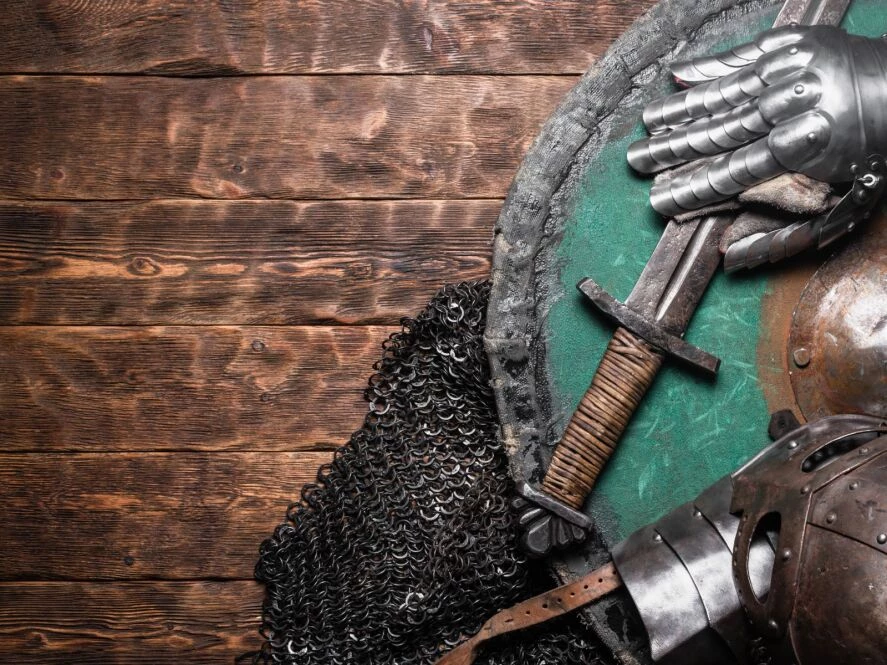
Whether a knight survived on the battlefield was determined several factors: his skills, his horse and the state of his armour. Maintaining, putting on and taking off a plate armour was not an easy task and typically required more than one pair of hands. But if your do not have a squire of your own to help you with this tedious routine, read on. We will tell you how to maintain your plate armour so that is stays in a perfect condition as long as possible.
Contents
For simplicity, we can divide the maintenance of plate armour into two stages:
- Maintenance of steel plates (the largest parts of armour)
- Maintenance of leather straps
Maintenance of Steel Plates
Plate armour requires regular maintenance, especially because the plates are prone to rust. If you are curious about how to remove rust from your armour, check out our separate article on the topic.
The steps described below will help you keep your plate armour in a tip-top shape!
1. Clean your armour
You can remove minor rust stains without using power tools or chemical products. First, clean the surface of the armour with a cleaning rubber or fleece. Fine-grit sandpaper with a grit of 100 grit or more is also an effective tool that will help you remove stains.
Before you get started, make sure you have safety goggles and gloves available to reduce the risk of injury and to protect your armour from moisture.
DID YOU KNOW... a full suit of plate armour can weigh up to 40-50 kilograms? Even for the fittest warriors, this was a considerable burden. This is why knights were often accompanied by a faithful squire who helped them carry all the weight.
2. Apply anti-corrosion treatment
Apply a small layer of protective oil to the cleaned surface of your plate armour. Leave the oil on for a while and then wipe it clean with a dry cloth.
If the surface of the armour remains a little bit greasy, it doesn't matter. If you scrub the surface too hard, you might scratch the steel plates and achieve the opposite of what you are trying to do.
3. Check the straps, chainmail parts and rivets
Before you put the armour back in its place, check the other parts of the armour - the chainmail (sometimes located in the armpits), or the rivets that hold the armour together.
Leather straps and various laces are the less visible parts of the plate armour, but they play an essential role in keeping the plates together and in place. You should pay special attention to them when maintaining your armour.
DID YOU KNOW... while regular armour maintenance is necessary to keep your gear in a good condition, an occasional scratch can add to its beauty. Seasoned warriors did not worry about imperfections on their armour too much. On the contrary - their armour bore witness to all the clashes and battles they survived, and they wore it with pride.
Maintenance of Leather Elements
Steel plates of the armour were held together by rivets and leather straps. Leather straps are clearly visible, for example, on ancient Japanese armours.
Leather straps should by no means be omitted when doing your armour maintenance. For the sake of simplicity, we will again break down the maintenance process into several steps.
1. Storage and inspections for wear and tear
Your armour maintenance should start when you put the armour away - make sure it is stored in a suitable place, away from natural or artificial heat sources. Leather can react to high temperatures by drying and wearing out, it will lose moisture faster, and become more prone to shrinkage and cracking.
Ideally, you should inspect the leather elements of your armour every 3 months, especially if you actively use your armour in reenactments of historical battles or costume events, and of course, you should also check your armour after each such event.
You should always pay special attention to armour elements that endure the most stress.
2. Leather treatment
Special leather care balms, such as beeswax or leather grease, help maintain the leather's elasticity.
Gently work the leather care product into the leather with a soft cloth. The leather should feel slightly oily, but apply the balm sparingly. Wipe off the excess balm with a cloth, and let the rest absorb.
It's usually enough to treat the front side of the leather (the side facing away from the body). The thicker side typically needs care only when the leather is in worse condition - starting to crack or tear. In such cases, it may be best to replace the damaged part entirely.
3. Replacing straps, rivets, buckles, and other small components
Straps and buckles are essential for properly securing the different parts of the armour to the body. With frequent use, wear and tear are common, so it's important to know how to replace these leather parts correctly.
- Choose the right material: For straps, sturdy cowhide leather at least 3 millimetres thick is ideal. Likewise, steel buckles must be strong enough to handle the demands of intended armour use. In our product portfolio, you can find durable leather products, including buckles and elegant historical-style leather belts.
- Make sure the assembly is correct: The rivets securing the straps to the armour must be fastened over a washer to prevent them from pulling out of the leather.
DID YOU KNOW... that proper and timely cleaning can extend the life of your historical costume by many years? Learn more about how to maintain your costume here.
Storing of Your Plate Armour for the Winter
After wrapping up this year's historical events, and knowing you won’t be using your armour for a while, store it in a dry place with a stable temperature.
If you’re putting it in a wardrobe, make sure it’s completely dry beforehand. In damp conditions, steel plates rust quickly, and natural materials can begin to rot.
A smart solution to prevent this is to use an armour stand. It saves storage space, and you get to admire your armour every time you walk by.
At the same time, you are more likely to notice any defects or flaws that may appear on the armour over time.
So, don't forget to maintain and clean your armour regularly, the result will be worth it! When you need to use your plate armour again in the future, you will know that you can rely on it.

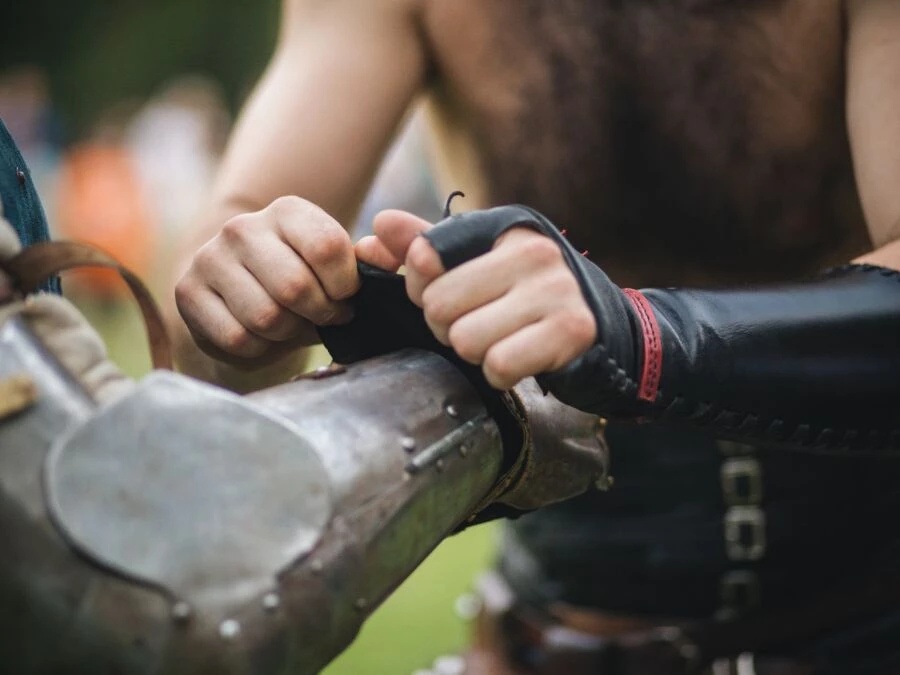
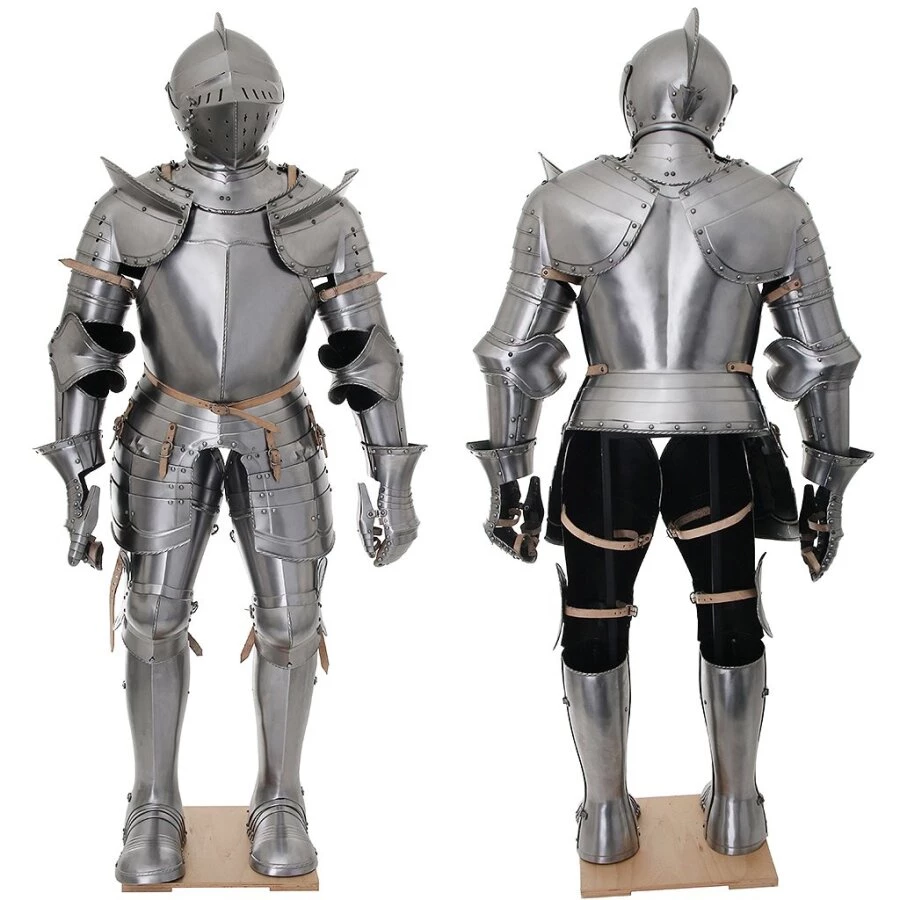
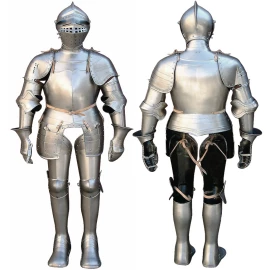

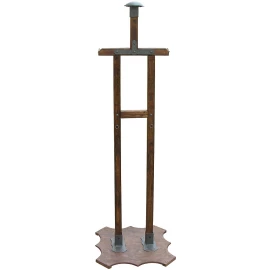
Comments